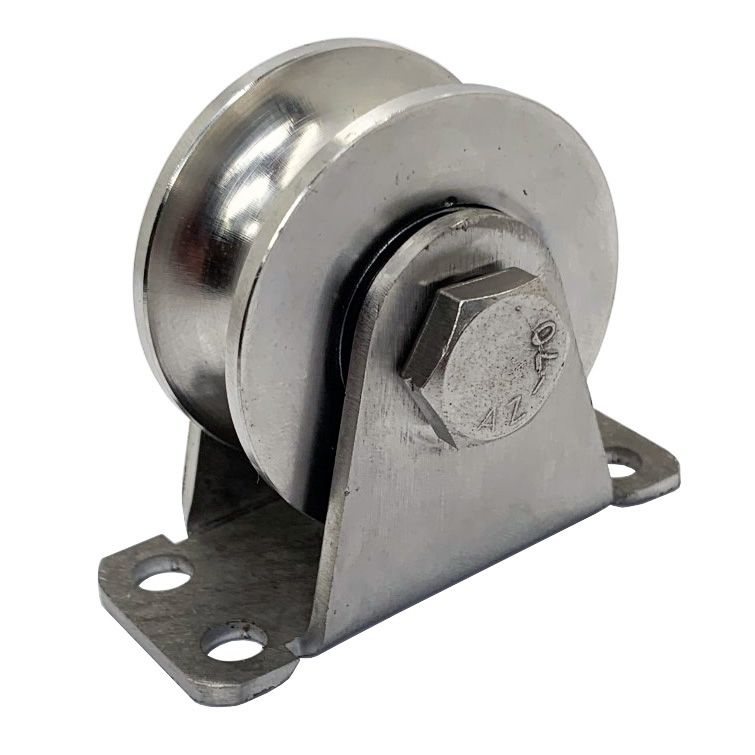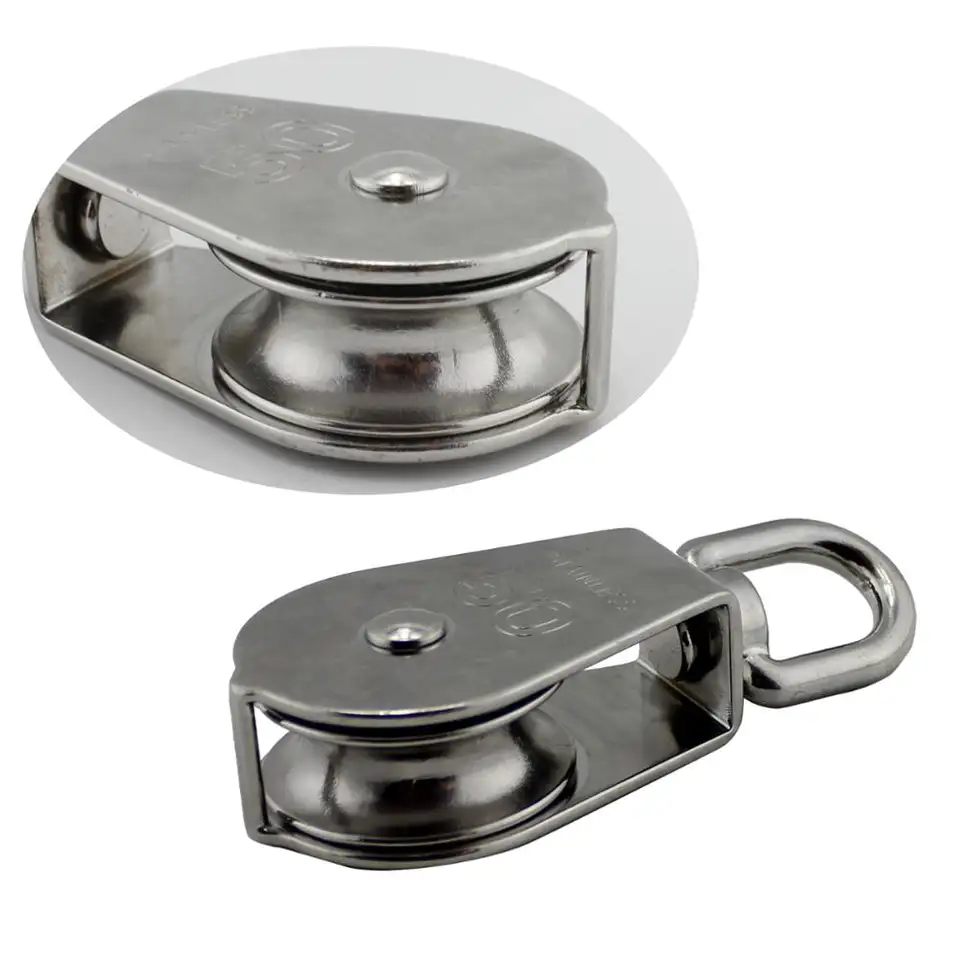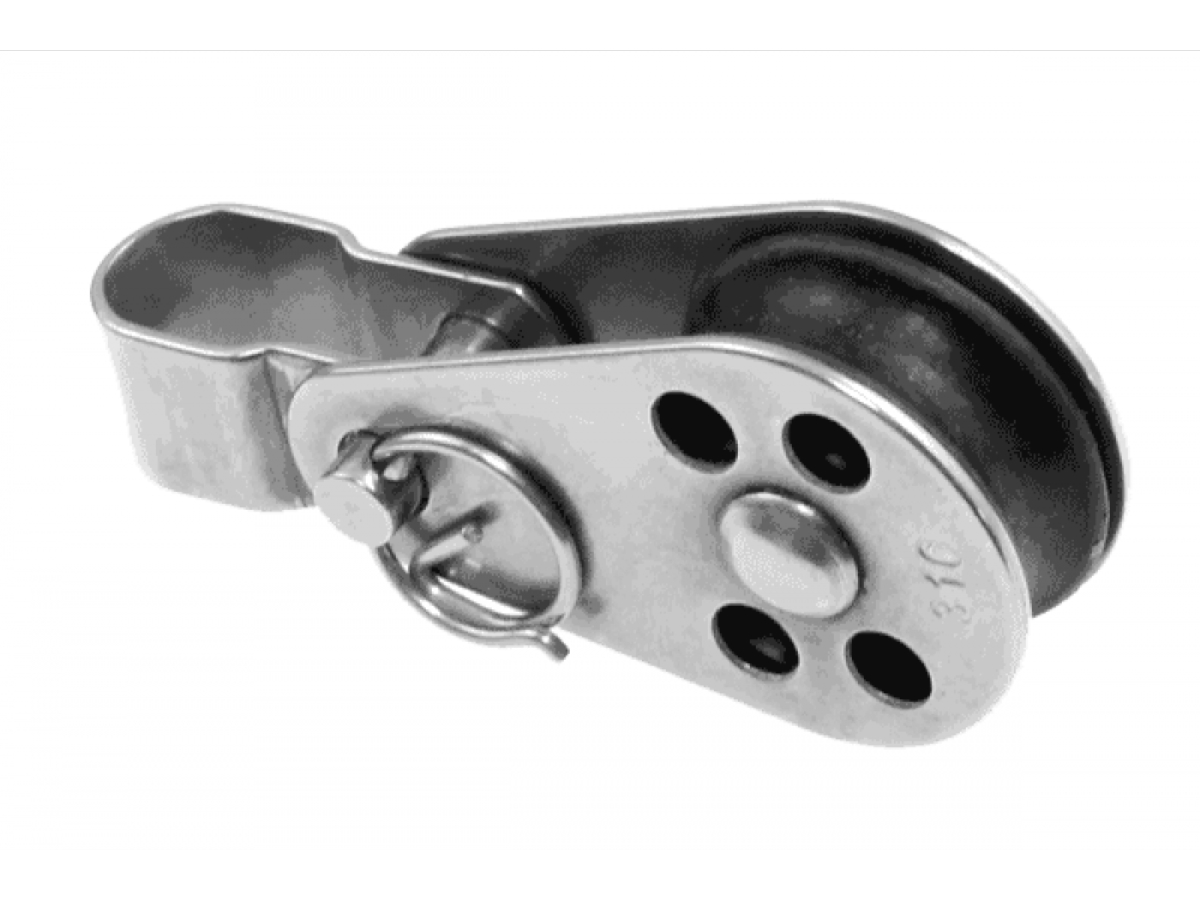Product Description
Synchronous Wheel Manufacturer Stainless Steel Timing Belt Pulleys For Packaging Industry
Advantages:
1. Good quality products
2. Competitive prices
3. Fast delivery
4. Best after-sale service
5. Brand: HeFa or OEM/ ODM
6.Normal torque drive timing pulley:MXL/XL/L/H
7.High torque drive gear type: S2M/ S3M/ S5M/ S8M/ HTD3M /HTD5M/ HTD8M/P2M/P3M/P5M/P8M
8.High precision position drive gear type:2GT/3GT/5GT/8YU
9.Light load drive gear type:T5/T10
10.Heavy load drive gear type:AT5/AT10
Product Parameters
| Product | Timing Belt Pulley & idler pulley |
| Teeth type | Normal Torque Drive Type:MXL,XL,L,H,XH,XXH High Torque Drive Type:S2M,S3M,S5M,S8M,HTD2M,HTD3M,HTD5M,HTD8M,P2M,P3M,P5M,P8M High Precision Position Drive Type:2GT,3GT,5GT,8YU Light Load Drive Type:T5,T10,T20 Heavy Load Drive Type:AT5,AT10,AT20 |
| Basic shape | Type A,Type B,Type D,Type E,Type F,Type K |
| surface treatment | Natural color anodizing,Black anodizing,Hard anodizing,Ni-plating,Blackening |
| Material | 6061(aluminum),S45C(45# steel),SUS304(Stainless steel) |
| Bore | Pilot bore, Taper bore and Customized bore. |
| testing equipment | projecting apparatus,salt spray test,durometer,and coating thickness tester,2D projector |
| producing equipment | CNC machine,automatic lathe machine,stamping machine,CNC milling machine,rolling machine,lasering,tag grinding machine etc. |
| Machining Process | Gear Hobbing, Gear Milling, Gear Shaping, Gear Broaching,Gear Shaving, Gear Grinding and Gear Lapping |
| Application industry | Robot industry,Medical industry,Making machine industry,Automation industry,3C industry equipment,Packaging industry,UAV industry,New energy industry. |
Company Profile
Packaging & Shipping
| lead time | 10-15 working days as usual,30days in busy season,it will based on the detailed order quantity |
| Delivery of samples | by DHL,Fedex,UPS,TNT,EMS |
FAQ
| Main markets | North America, South America,Eastern Europe,Weat Europe,North Europe.South Europe,Asia |
| How to order | *You send us drawing or sample |
| *We carry through project assessment | |
| *We give you our design for your confirmation | |
| *We make the sample and send it to you after you confirmed our design | |
| *You confirm the sample then place an order and pay us 30% deposit | |
| *We start producing | |
| *When the goods is done,you pay us the balance after you confirmed pictures or tracking numbers | |
| *Trade is done,thank you!! |
| Certification: | CE, ISO |
|---|---|
| Pulley Sizes: | Type A |
| Manufacturing Process: | Casting |
| Material: | Stainless Steel |
| Surface Treatment: | Baking Paint |
| Application: | Chemical Industry, Grain Transport, Mining Transport, New Energy Industry |
| Samples: |
US$ 10/Piece
1 Piece(Min.Order) | |
|---|
| Customization: |
Available
| Customized Request |
|---|

How do stainless pulleys contribute to the efficient and corrosion-resistant operation of systems?
Stainless pulleys play a crucial role in ensuring the efficient and corrosion-resistant operation of various systems. Here’s how they contribute:
- Corrosion Resistance: Stainless pulleys are made from stainless steel alloys that exhibit excellent corrosion resistance. Stainless steel contains chromium, which forms a passive oxide layer on the surface, protecting the pulley from corrosion caused by moisture, chemicals, and environmental factors. This corrosion resistance ensures the longevity and reliability of the pulleys in harsh operating conditions.
- Durability: Stainless pulleys are known for their durability and robustness. They can withstand heavy loads, high pressures, and repetitive motion without deforming or failing. The inherent strength of stainless steel ensures that the pulleys maintain their shape and performance over time, contributing to the overall efficiency and reliability of the system.
- Smooth Operation: Stainless pulleys are precision-engineered to provide smooth and consistent operation. The pulley’s design, including its groove shape, diameter, and surface finish, ensures proper belt or rope tracking, minimizing friction and energy loss. This smooth operation reduces wear and tear on the system components, enhances energy efficiency, and allows for more precise control of the system’s movement and speed.
- Low Maintenance: Stainless pulleys require minimal maintenance compared to pulleys made from other materials. Their corrosion-resistant properties eliminate the need for frequent cleaning or protective coatings. Additionally, stainless steel’s resistance to wear and fatigue reduces the need for frequent replacement, resulting in lower maintenance costs and increased system uptime.
- Hygienic Compliance: In industries such as food processing and pharmaceuticals, maintaining hygienic conditions is critical. Stainless pulleys are easy to clean and sanitize, making them suitable for applications where strict hygiene standards must be met. Their smooth surface finish prevents the accumulation of contaminants and allows for thorough cleaning, reducing the risk of product contamination.
- Compatibility with Food and Pharmaceutical Regulations: Stainless pulleys are widely accepted in the food processing and pharmaceutical industries due to their compatibility with regulatory standards. Stainless steel alloys like 304 and 316 meet the requirements of various food and pharmaceutical regulations, such as FDA (Food and Drug Administration) and EHEDG (European Hygienic Engineering & Design Group) guidelines. This ensures compliance with industry regulations and contributes to the safe and efficient operation of systems.
Overall, stainless pulleys provide the necessary corrosion resistance, durability, smooth operation, low maintenance requirements, hygienic compliance, and compatibility with regulatory standards. These qualities contribute to the efficient and reliable operation of systems across various industries.

What considerations should be kept in mind when selecting stainless pulleys for marine applications?
When selecting stainless pulleys for marine applications, several considerations should be kept in mind to ensure optimal performance and longevity. Here are key factors to consider:
- Marine-Grade Stainless Steel: Choose pulleys made from marine-grade stainless steel, such as 316 stainless steel. Marine-grade stainless steel offers superior corrosion resistance, especially in saltwater environments. It withstands the corrosive effects of seawater, moisture, and exposure to marine elements, reducing the risk of premature pulley failure.
- Finish and Coating: Consider pulleys with additional protective finishes or coatings suited for marine environments. These finishes, such as electro-polishing or specialized marine-grade coatings, provide an extra layer of protection against corrosion and help maintain the pulleys’ performance and appearance over time.
- Sealed Bearings: Opt for stainless pulleys equipped with sealed bearings. Sealed bearings prevent water, salt, and contaminants from entering the bearing housing, ensuring smooth operation and extending the pulley’s lifespan in marine applications.
- Load Capacity: Evaluate the load capacity requirements of the marine application. Ensure that the selected stainless pulleys can handle the expected loads without compromising performance or safety. Consider factors such as the weight of the cargo, tension on the ropes or belts, and dynamic loads that may occur during marine operations.
- Size and Design: Consider the size and design of the pulleys to ensure they can be properly integrated into the marine system. Evaluate factors such as pulley diameter, groove size, and shaft diameter compatibility with ropes, belts, or cables used in the marine application. Proper sizing and design will optimize power transmission and reduce the risk of slippage or premature wear.
- Environmental Factors: Assess the specific environmental factors in the marine application. Consider variables such as saltwater exposure, waves, humidity, temperature fluctuations, and potential chemical exposure. Select stainless pulleys that are specifically designed to withstand these environmental conditions.
- Compliance with Regulations: Ensure that the selected stainless pulleys comply with relevant marine regulations and standards. Depending on the application, there may be specific requirements or certifications that the pulleys need to meet to ensure compliance and safety.
By considering these factors when selecting stainless pulleys for marine applications, you can choose pulleys that are well-suited to withstand the challenges of the marine environment, offer reliable performance, and contribute to the overall efficiency and safety of the marine system.

What types of materials are typically used for the sheaves or wheels of stainless pulleys?
The sheaves or wheels of stainless pulleys are typically made from various materials to meet specific performance requirements. Here are some common materials used for the sheaves or wheels of stainless pulleys:
- Stainless Steel: Stainless steel sheaves or wheels are commonly used in stainless pulleys to ensure compatibility and consistency in terms of corrosion resistance and durability. Stainless steel sheaves can be made from the same stainless steel grade as the pulley body, providing a cohesive and robust construction.
- Nylon: Nylon is a popular choice for sheaves or wheels in stainless pulleys due to its excellent wear resistance, low friction coefficient, and self-lubricating properties. Nylon sheaves are lightweight, durable, and suitable for applications that require quiet and smooth operation.
- Acetal: Acetal, also known as polyoxymethylene (POM), is another material used for sheaves or wheels in stainless pulleys. Acetal sheaves offer good mechanical strength, wear resistance, and low friction characteristics. They are often chosen for applications that involve high speeds or where chemical resistance is required.
- UHMW (Ultra-High Molecular Weight Polyethylene): UHMW is a high-performance plastic known for its exceptional impact strength, abrasion resistance, and self-lubricating properties. UHMW sheaves or wheels are suitable for heavy-duty applications where resistance to wear, impact, and noise reduction are important.
- Cast Iron: In certain industrial applications, particularly those involving heavy loads and high stress, cast iron sheaves or wheels may be used in stainless pulleys. Cast iron provides excellent strength and durability, making it suitable for demanding applications such as mining or construction.
- Aluminum: Aluminum sheaves or wheels are lightweight and offer good corrosion resistance. They are commonly used in stainless pulleys where weight reduction is desired without compromising strength and performance.
The selection of the sheave or wheel material depends on factors such as the specific application requirements, load capacity, environmental conditions, and desired performance characteristics. By choosing the appropriate material, stainless pulleys can achieve optimal functionality, durability, and efficiency in their respective applications.


editor by CX
2023-10-18